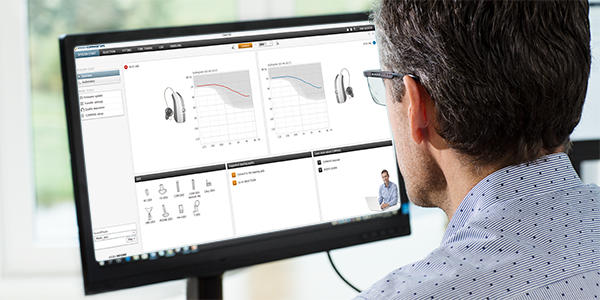Buying hearing aids is a complex process. There are lots and lots of choices to make – from the type of provider you work with, to the specific hearing aid you choose.
Here are the top 6 mistakes patients often make, and how to avoid these pitfalls.
1. Basing Your Decision on Information in a Mailer
Health insurance companies, franchises, private practices and hearing aid manufacturers all send regular mailers to potential patients to entice them to act. Mailers that offer big discounts or special “discount plans” are usually based upon an inflated manufacturer’s suggested retail price (MSRP). “Free trials” are often non-custom devices fit under “study or clinical trial.” In other cases, they are simply advertising an assessment period and calling it a trial. These marketing techniques can be misleading because hearing aid manufacturers conduct these studies prior to new product release or in a very controlled manner in which only those who meet specific criteria may participate. Not all mailers are bad, but be sure you read the fine print and check the source before you buy. Remember, that old adage, “If it sounds too good to be true, it probably is,” also applies to hearing aids.
2. Buying Generic, Cheap Hearing Aids Your “Insurance” Claims They’ll Cover
In most cases, these are simply low-end, low-cost basic hearing aids which are often off-brand. Be sure to compare the features of these hearing aids to others. In some cases, you may be able to find less expensive name-brand hearing aids with similar or better features for a similar cost.
3. Seeing the Wrong Provider
There are primarily two types of professionals who can dispense hearing aids – audiologists and hearing aid dispensers. Audiologists receive extensive education in hearing and balance disorders. Audiologists have earned postgraduate masters and/or doctoral degrees. A doctoral degree is now required for graduates practicing after 2012. You may look for the initials Au.D., (Doctor of Audiology—clinical degree); or Ph.D. (Doctor of Philosophy—research and/or clinical research degree) to designate doctoral training.
As part of their four-year doctoral training, these audiologists spend a final year completing an externship experience supervised by a licensed audiologist. The externship provides practical, hands-on, advanced experience.
A hearing aid dispenser can perform basic hearing tests and can sell and service hearing aids, but their scope of practice is more limited than an audiologist’s. The designator or credential for a hearing instrument dispenser or specialist is HIS (i.e., John Doe, HIS).
4. Not Having Your Hearing Aids Verified Using Real-Ear Measurement
Real-ear measurement is a scientific and objective way to find out if your hearing aids are performing the best they can for you. A real-ear measurement involves placing a thin probe microphone in your outer ear while you wear your hearing aid to measure how it is responding. It takes into account the size and shape of your ear, which can also dramatically affect how your hearing aid needs to be programmed.
These tests are performed using a probe-microphone and real-ear measurement software, with the results showing graphs of what your hearing aid prescription should be compared to how well your hearing aids are actually performing. Only 20 to 30 percent of practices nationwide verify hearing aids using real-ear measurements. Associated Audiologists is one of them.
5. Thinking the Hearing Aids Your Friend Has Will Work for You, Too
Your hearing is as individual as you are. No two people hear exactly the same. Still, patients often come to appointments insisting they want the same hearing aids a friend has. Some have even tried wearing their friends’ hearing aids! This would be analogous to wearing your friend’s eyeglass prescription or dentures. Just know from the outset that you need to have an open mind and listen to your audiologist’s recommendations. The brand of hearing aids your friend has may be a good “fit” for you, but you may be more comfortable or better served with a different style, model or brand. Or you may also want or need more features than your friend. What’s most important is that you work with a doctoral-level audiologist who has your best interests in mind, and whose recommendations work well with your hearing loss, lifestyle, and budget.
6. Thinking That Smaller Is Better
Often, advertisements and mailers feature “invisible” or tiny hearing aid technology. Many consumers equate these smaller devices with being technologically advanced or superior, but that’s not necessarily the case. Smaller, completely in-the-canal hearing aids, are less visible, but patients often don’t care for the “plugged up” feeling they have with these devices because they fit in the ear canal. In fact, there are several styles of hearing aids, such as open-fit behind-the-ear, or receiver-in-the-canal. Sometimes, the technology you think you want may not be available in the tiniest style, but is in another style. For example, small in-the-canal hearing aids have room for just one microphone while most other styles have two advanced, adaptive directional microphones which provide advantages when communicating more complex listening environments like backgrounds of noise. Talk with your audiologist to get hearing aids that help you hear better, and that are comfortable.
Bottom line, you can avoid making these mistakes by working with the right provider, starting with a comprehensive hearing evaluation. Ninety percent of your success with hearing aids is related to the professional you work with.
At Associated Audiologists, our doctoral-level audiologists have received extensive education in hearing, hearing aids, tinnitus and balance disorders. We verify every hearing aid we fit using real-ear measurement.



